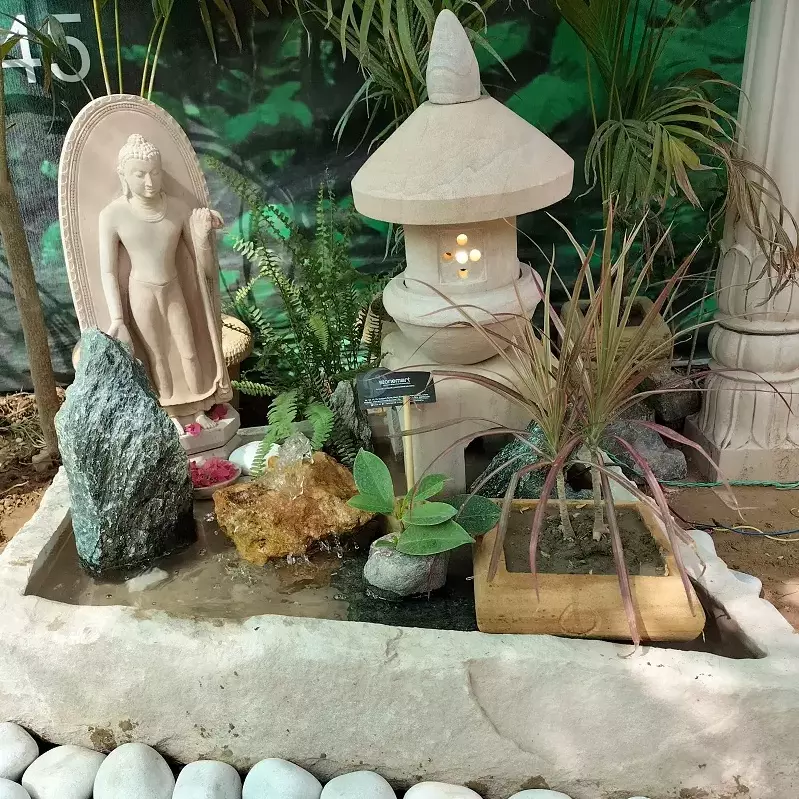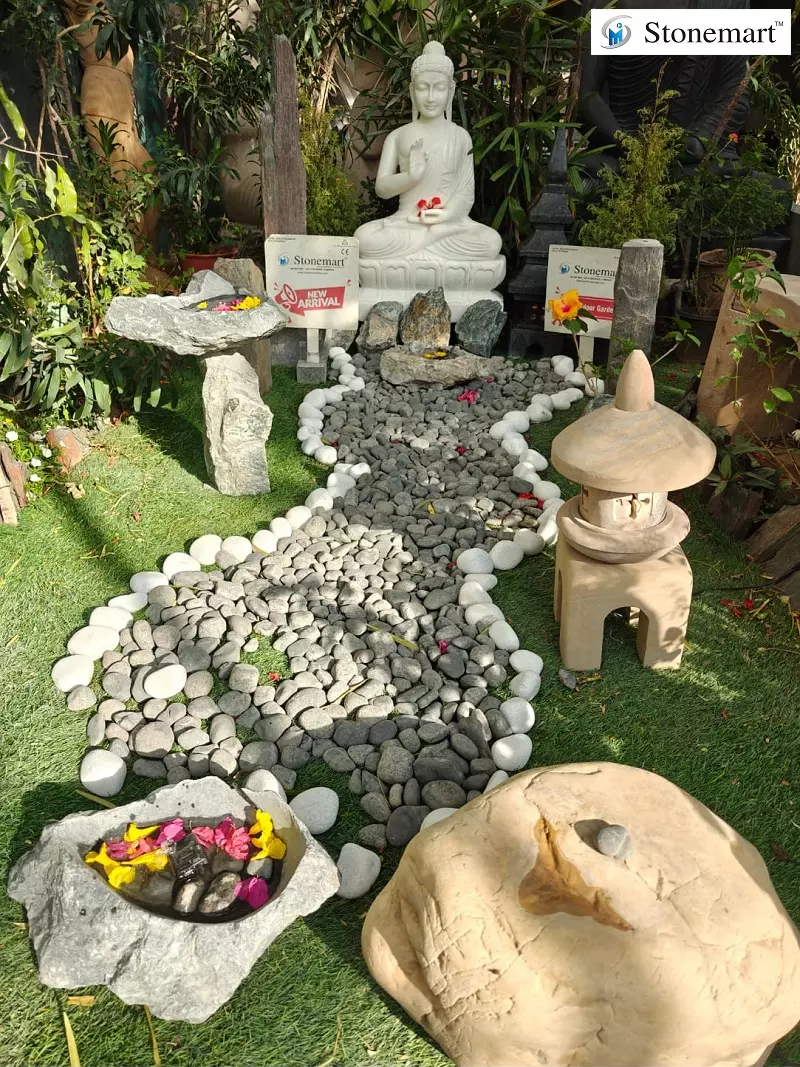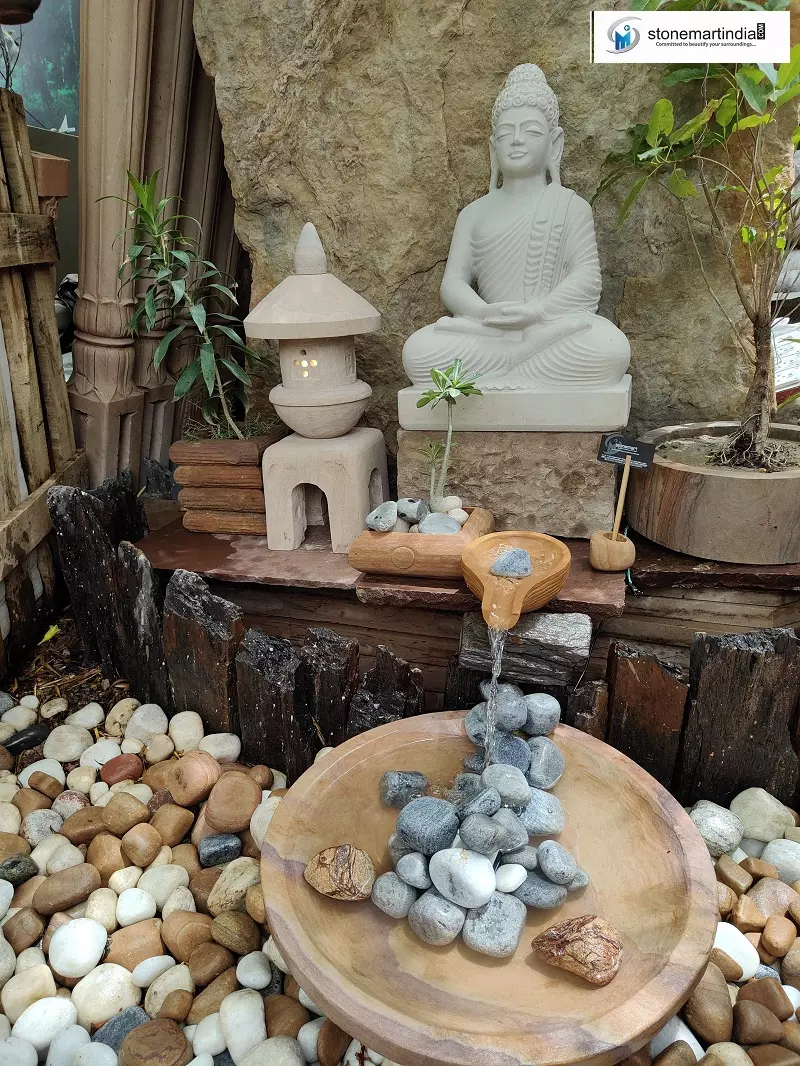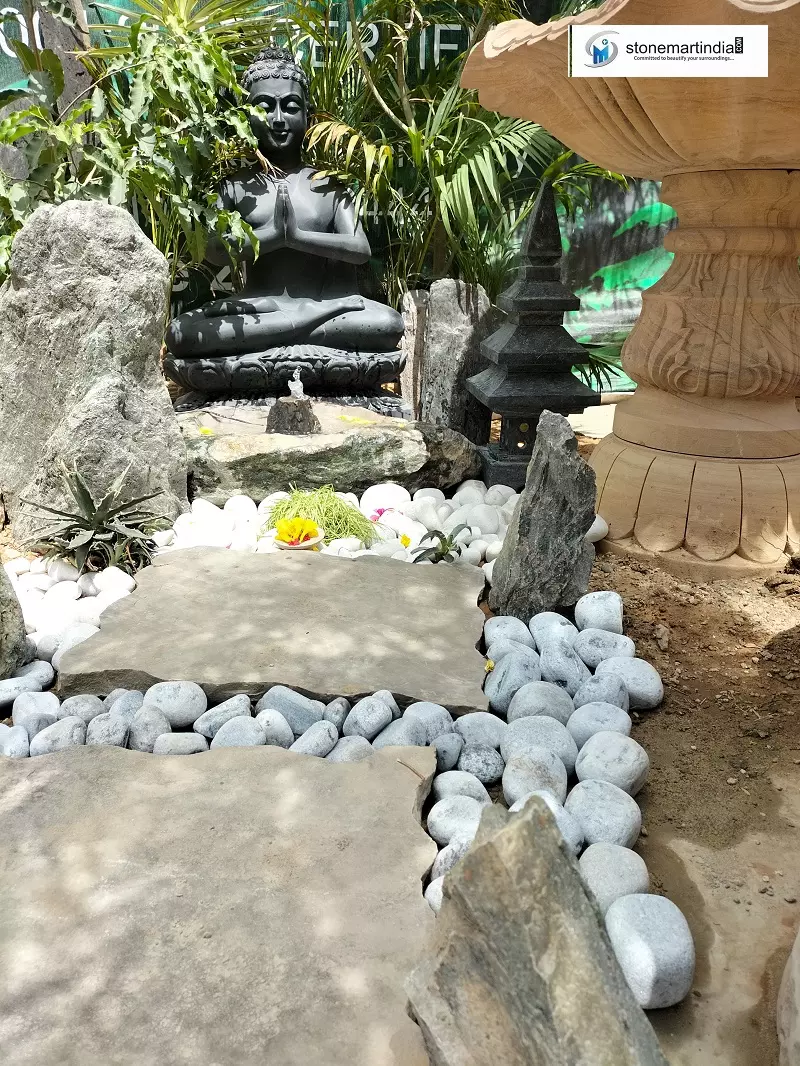What is the Difference Between Traditional Buddhism and Zen Buddhism? Part 1

While decorating home and garden with traditional Buddha statues and Zen garden Buddha set-up, we do not delve deep into the core difference between the two. Of course, Buddha is the central figure of both the branches of Buddhism, yet there are plethora of differences between the two faiths and practices.
Today, we will try to get a better insight on both and avail spiritual knowledge of the Buddha that we place indoor and outdoor for Vastu and Feng shui effects.

MUST READ: 5 Smart Ways to Use the Natural Stone Decor Ideas for Dream Landscaping
Let us try to understand the core principles of the both with the help of the table drawn below -
| Point of Distinction | Traditional Buddhism | Zen Buddhism |
|---|---|---|
| Place of Origin | India | China |
| Use of Statues and Pictures | Common in traditional Buddhism. Statues are a medium for peace and meditation like dhyana mudra Buddha statue or positivity like abhaya mudra Buddha statue. They are revered as they reflect the qualities of the Buddha. | They are used as a symbolic reminder, which can be observed in stone Buddha sculptures, arts, as well as architecture. |
| Belief of God | The concept of an omniscient, omnipresent and omnipotent creator is rejected by the Buddhists. The Buddha himself has refuted the theistic argument that the creation of the universe was done by a personal self-conscious God. | They believe in the "Buddhas" that can live forever as well as influence the mankind in various manners identical to the abilities attributed to the "God(s)". The information is derived from the late sutras Mahayana and opposite to the original, oldest teachings (Pali canon). |
| Place of Worship | Buddhist Monasteries, Shrines and Temples | Temple and Pagoda |
| Life after Death | Rebirth is indeed one of the core beliefs of Buddhism. We are trapped inside a perpetual cycle of birth, death and re-birth, which can only be brought to an end by attaining Nirvana. | Talks about multiple births, ultimate emancipation with Nirvana. |
| Practices | Believe in practicing meditation, the Eightfold Path; right aspiration, right view, right speech, right livelihood, right action, right effort, right concentration and right mindfulness. | Regular visit to the temple to meditate and make offerings to the Buddha as well as donations to monks and nuns. |
| Clergy | The Buddhist Sangha, featuring bhikkhus (the male monks) and bhikkhunis (the female nuns). There sangha is supported by the lay Buddhists. | The clergy features monks and nuns. |
| Founder | The Buddha (born as Prince Siddhartha Gautama) | It was founded by those who broke the path from the original teachings of the Buddha. Also those who made adjustments to his teachings, during the Third Buddhist Council. |
| Literal Meaning | Traditional Buddhists are those who follow the teachings of the Buddha. | Zen is basically the Japanese translation of the Chinese word "chan" which is the word for "dhyana" which is the Sanskrit term for the Pali term "jhana" meaning "meditation". |
| Human Nature | Ignorance which can be found in all sentient beings. As per the Buddhist texts, when Gautama was asked whether he was a normal human being after his awakening, he replied, "No". | The lust and desire of man for the material aspects of life leads to suffering. |
| Goal of Religion | To achieve enlightenment and get released from the perpetual cycle of birth, death, and rebirth to attain Nirvana. | To attain enlightenment |
| Marriage | It is not a religious duty to get married. Monks and nuns never marry and stay celibate. However, advise in the discourses about how to maintain a happy and harmonious married life. | There is no specific information in the sutras. Varies greatly depending upon which school of Zen and based in which country. |
| Means of Salvation | Reaching Enlightenment or Nirvana, following the Noble Eightfold Path. | Seeking enlightenment through day to day tasks. |
| View of the Buddha | He is the highest teacher and the founder of traditional Buddhism. He is the all-transcending sage. | He is the central figure of Zen. He is believed to be existence in another realm and be able to help humans from there. Although the Buddha is not heavily relied on in Zen, as the practitioner mostly relies on his or her actions. |
| Confessing Sins | There is no Buddhist concept of sin | Not discussed in Zen Buddhism |

We fully hope that the distinctions that we highlighted in the table above would help you get certain idea about how Zen Buddhism in different from conventional Buddhism. You can buy Buddha statue and place it solely in traditional set-up. It can be a Buddha sculpture in dhyana mudra, Buddha sculpture in abhaya mudra, Buddha sculpture in anjali mudra, Buddha sculpture in dharmachakra mudra, Buddha sculpture in bhumisparsha mudra, Buddha sculpture in vitarka mudra, or Buddha sculpture in reclining mudra.
MUST READ: Top 10 Decor Ideas for your Newly Built Dream Bungalow in 2024
On the other hand, a Zen garden Buddha statue would not be installed alone. It is significant to create a minimalist dry landscape that comprises of the stone Buddha idol in any other the above mentioned mudras. But along with natural elements of pebbles, rocks, gravel, a few planters, stone lamps and a rock urali or fountain to introduce the balance and harmony of water.

Reach Stonemart™️ and Buy Buddha Stone Statue for Home and Garden in both traditional Buddha and Zen Buddha décor and spiritual set-up. An ISO 9001:2015, CE certified leading stone manufacturer and exporter in India since 2006 transforming natural stones into invaluable spiritual and Vastu décor products.
Shop now for the most pleasing shopping experience of the lifetime!
